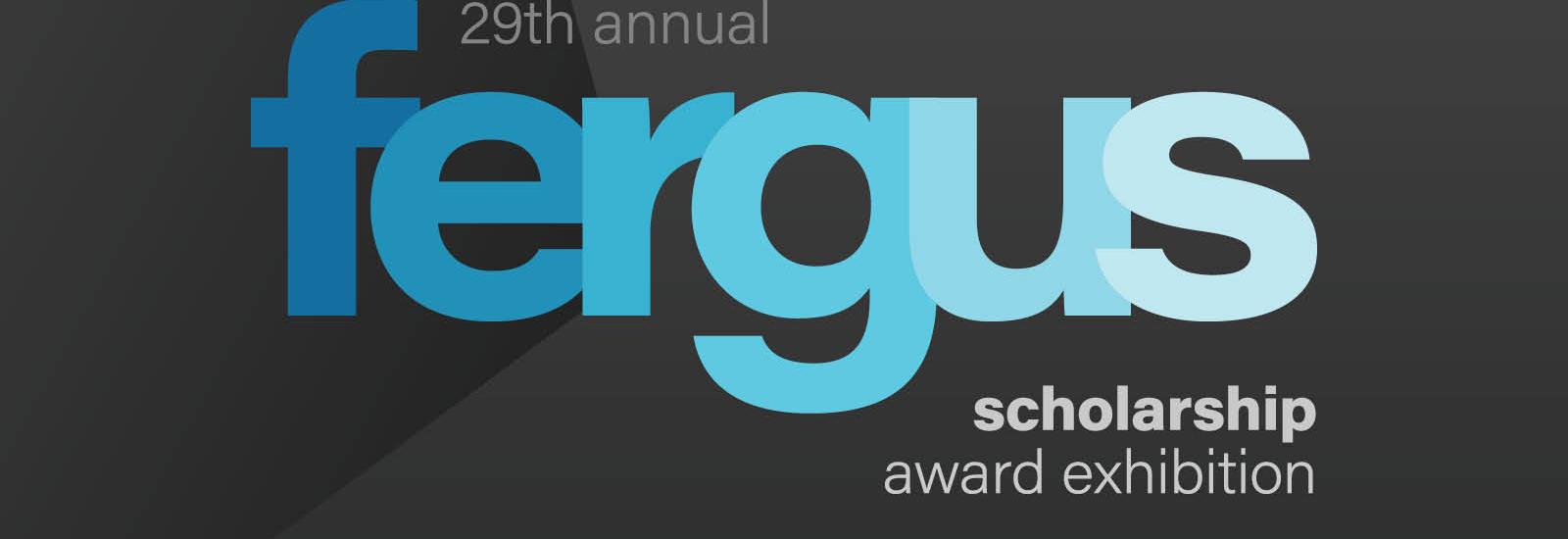Welcome to the 29th Annual Fergus Scholarship Award Exhibition!
Urban Arts Space is pleased to present selected works by the recipients of the 29th Annual John Fergus Family Fund Scholarship Awards, a juried competition open to all studio-based undergraduate and graduate visual art and design majors at The Ohio State University. Recipients are chosen by a jury of faculty from the Departments of Art; Design; Arts Administration, Education and Policy; and History of Art.
The Fergus Materials and Scholarships Fund was established with gifts from John C. and Elizabeth O. Fergus, and Robert H. Fergus in honor of their mother, Edith Fergus-Gilmore. It is the strong belief of the family, and the overriding philosophy of these awards, that it is important to give back to one's community.
This year's exhibiting artists are: Robert Bills, Caeley Blechschmid, Dustin Brinkman, Francis Brogan, Sarah Burger, Jordan Chase, Julia Chen, Kayla Gifford, Jenna Josell, Erin Kearney, Anna Kovach, Angel Lam, Jet Ni, Aishwarya Patel, Aaron Peters, Julian Robbins, Lydia Smith, Nalani Stolz, Brett Taylor, and Mitch Vicieux.
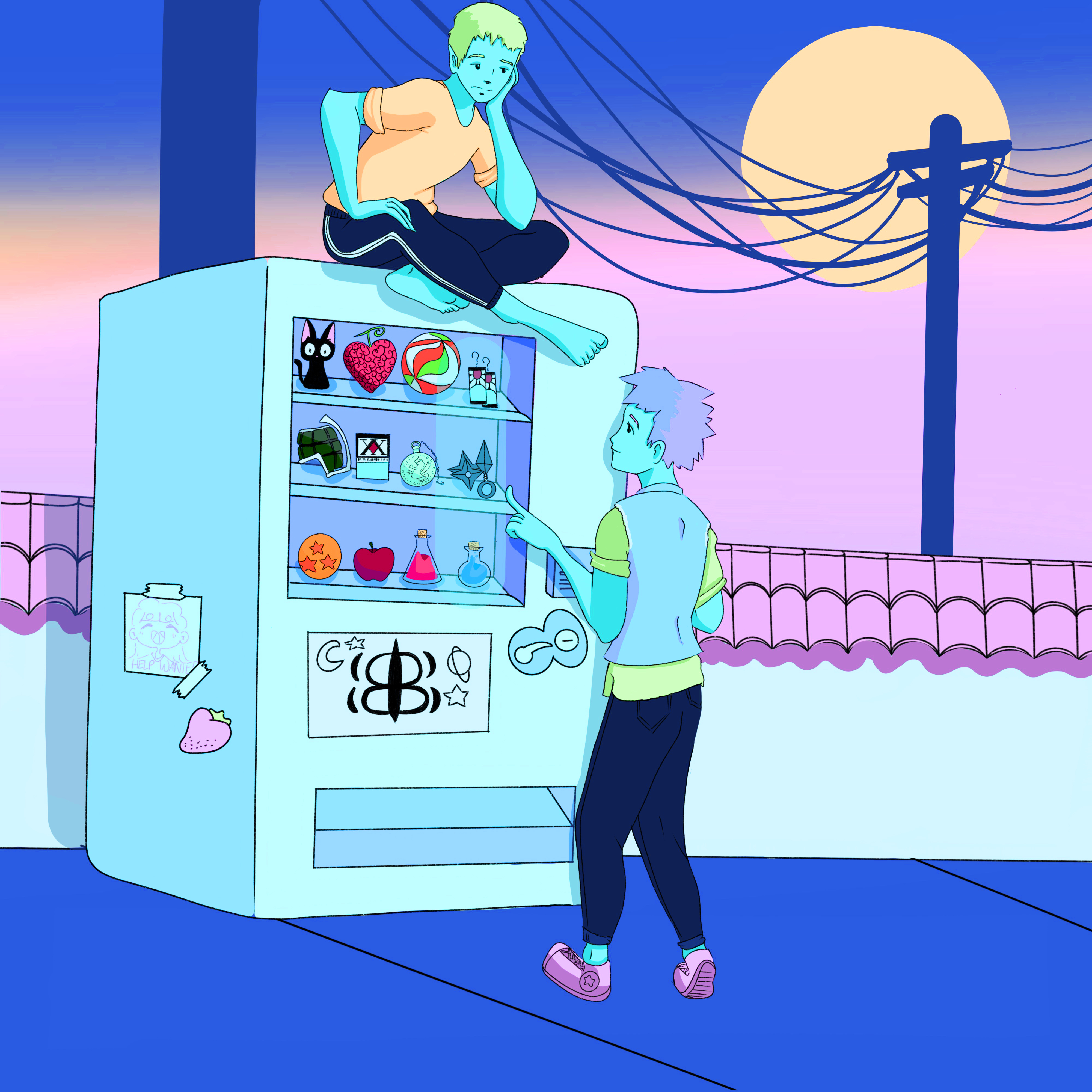
Robert Bills
Gold
.mp3
00:02:22
2020
I am a musician and a visual artist. I have been using Adobe programs with a drawing tablet to get used to working in a digital space since COVID began. I began to start sketching things I enjoyed and adding colors to them. Photoshop has taught me a lot about using computers to manipulate an image. It also has helped me with improving my audio editing skills. Similar techniques are used when editing music such as layering effects.
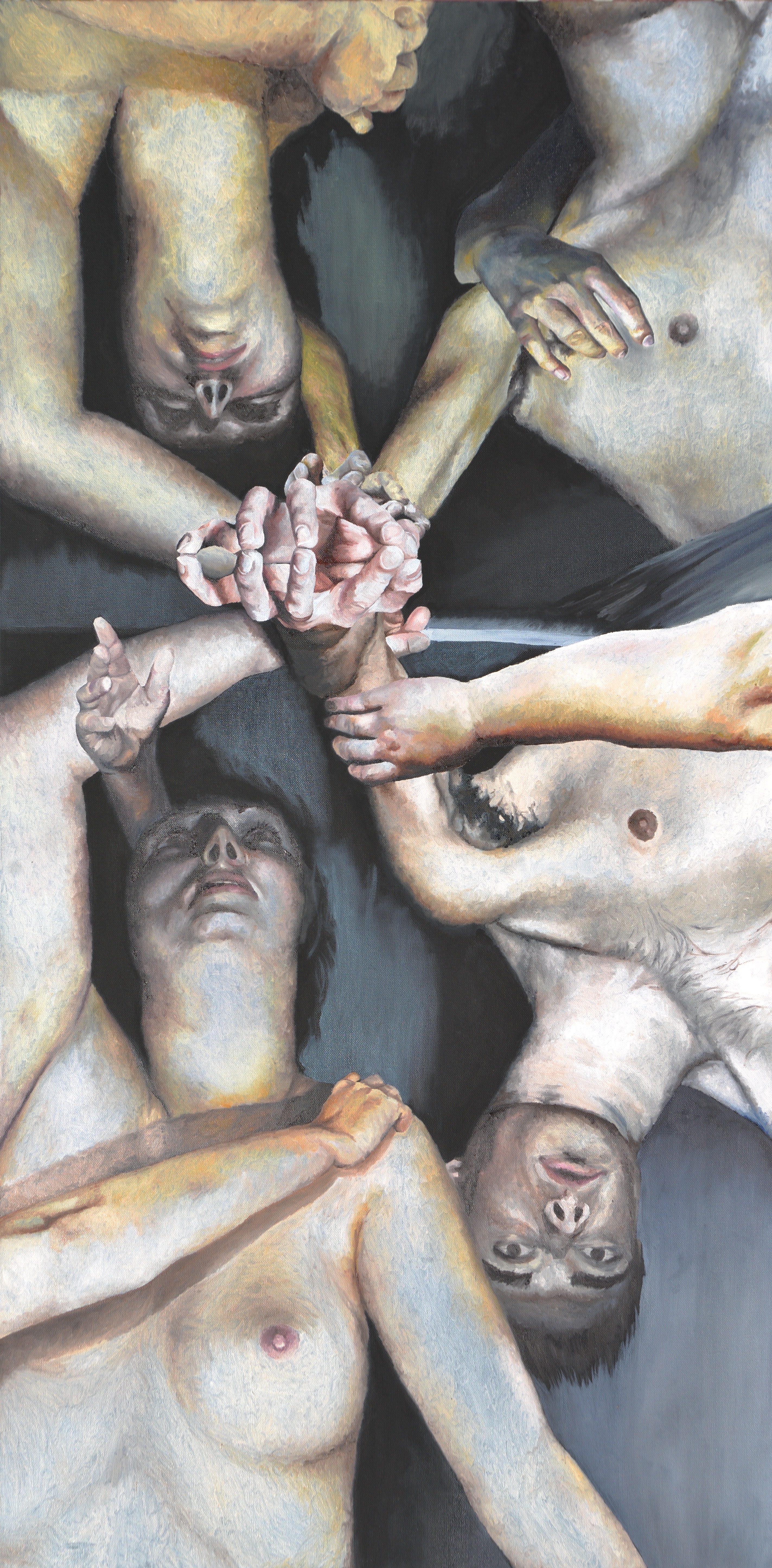
Caeley Blechschmid
Entanglement
oil paint on canvas
24" x 48"
2019
Coming from a background in science and art, the human anatomy and form have been my main source of exploration. Science is very to the point and structured, however, my practice has focused on exploring the body and its lack of structure. There is so much that can be told from the human figure in its purest form and with its intricacies, and I work to tell the story. Through realistic depictions, I capture some of the traits of the human body that are ridiculed in the media for imperfection, showing all body types and characteristics. Growing up in an environment that focused on the fundamentals like form, value, and color theory, I have developed a technique using oil paints, colored pencils, and graphite pencils to show the small details. I create visible marks, like paint strokes, that creates an essence of purposeful imperfection. Throughout our lives, our bodies change, our skin stretches, weight fluctuates, and wear and tear happens; this does not make any person unworthy of being depicted. Science and anatomy groups people of the same gender, and the uniqueness of each human form is lost. Through my art practice, I can learn more about anatomy while simultaneously creating pieces of work that emphasize the difference among bodies.
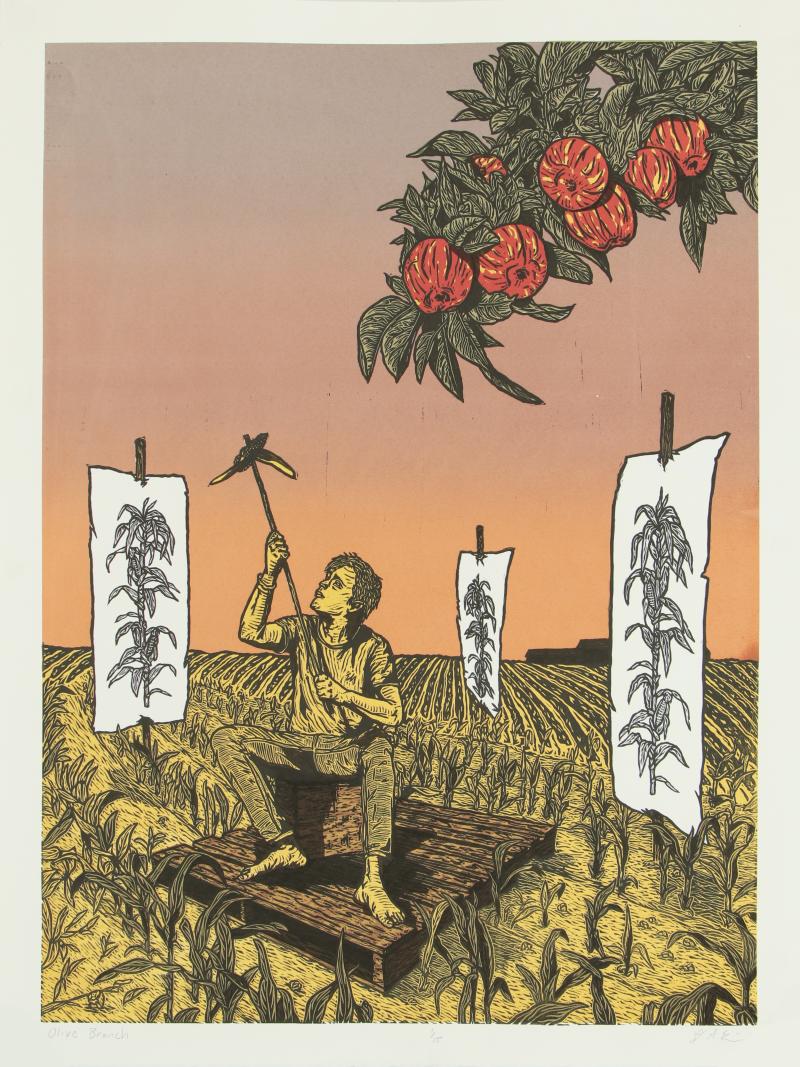
Dustin Brinkman
Olive Branch
relief carving and screen print
18" x 24"
2020
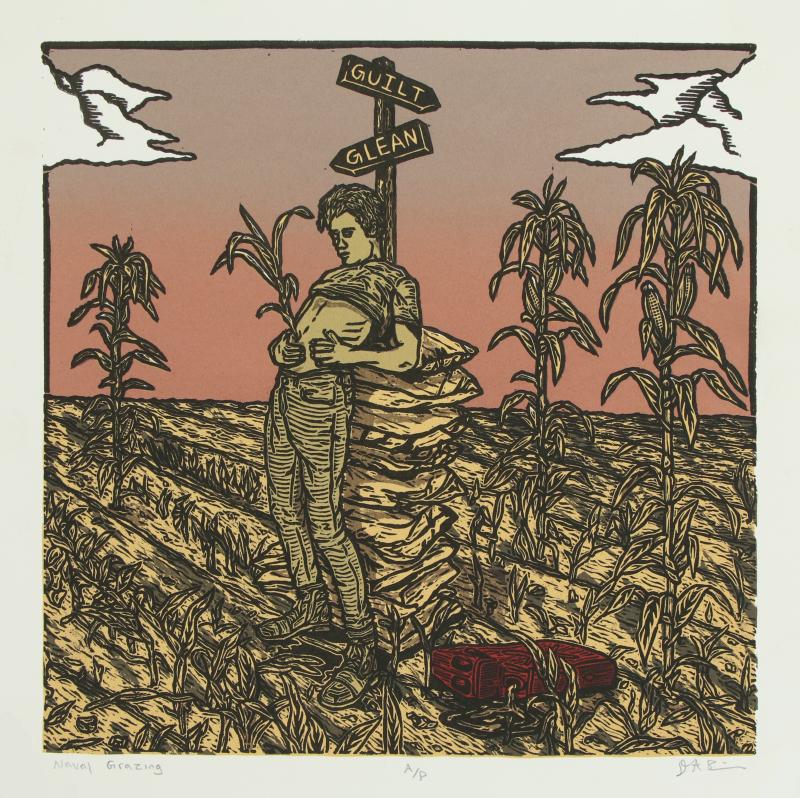
Dustin Brinkman
Naval Gazing
relief carving and screen print
11" x 11"
2020
Dustin’s figurative and narrative driven works scrutinize the complicated locus and problematic portrait of the Mid-West. Mono-cropping, over extraction of resources, seed erasure, food production, and an inherited landscape that has been wounded by both American capitalism and human exceptionalism are questioned and analyzed in his research. These reimagined territories indicate a need for kinship amongst the human and non-human actants in the natural world. By placing alternate versions of himself within the printed image by way of his twin brother or their doppelgänger, Dustin contemplates his connections to the evolving circumstances of this current ecological dilemma and how he may have contributed, accepted, or rejected the culture he was raised with and continues to live in.

Francis Brogan
Fran’s Rage Release - Angry Dad
wood, metal, and found objects
70" x 54" x 40"
2019

Francis Brogan
Fran’s Rage Release - Scared Kid
metal, cloth, and found objects
58" x 22" x 12"
2019
The goal of my work is to expose people to a wider range of perspectives. I want to create a conversation about the impact of parents on their children as well as a conversation about the unnecessary seriousness of the systems we live in. By spreading ideas I am able to give new people my perspective and find people with similar perspectives.
I use sculpture as a way to visualize my thoughts as I interpret my relationship with my parents for the first time as an adult, how my naivety impacted the idealistic view of my parents. When I was a child I looked at my parents as all-knowing. When creating my Father Pitching Machine, I was thinking about what would go through a father’s mind to release his rage onto his ten-year old son and what it says about his own insecurities’ that he got enraged because of a lack of baseball ability. I use sculpture as a way to visualize my thoughts on the new information as I interpret my relationship with my parents for the first time as an adult.
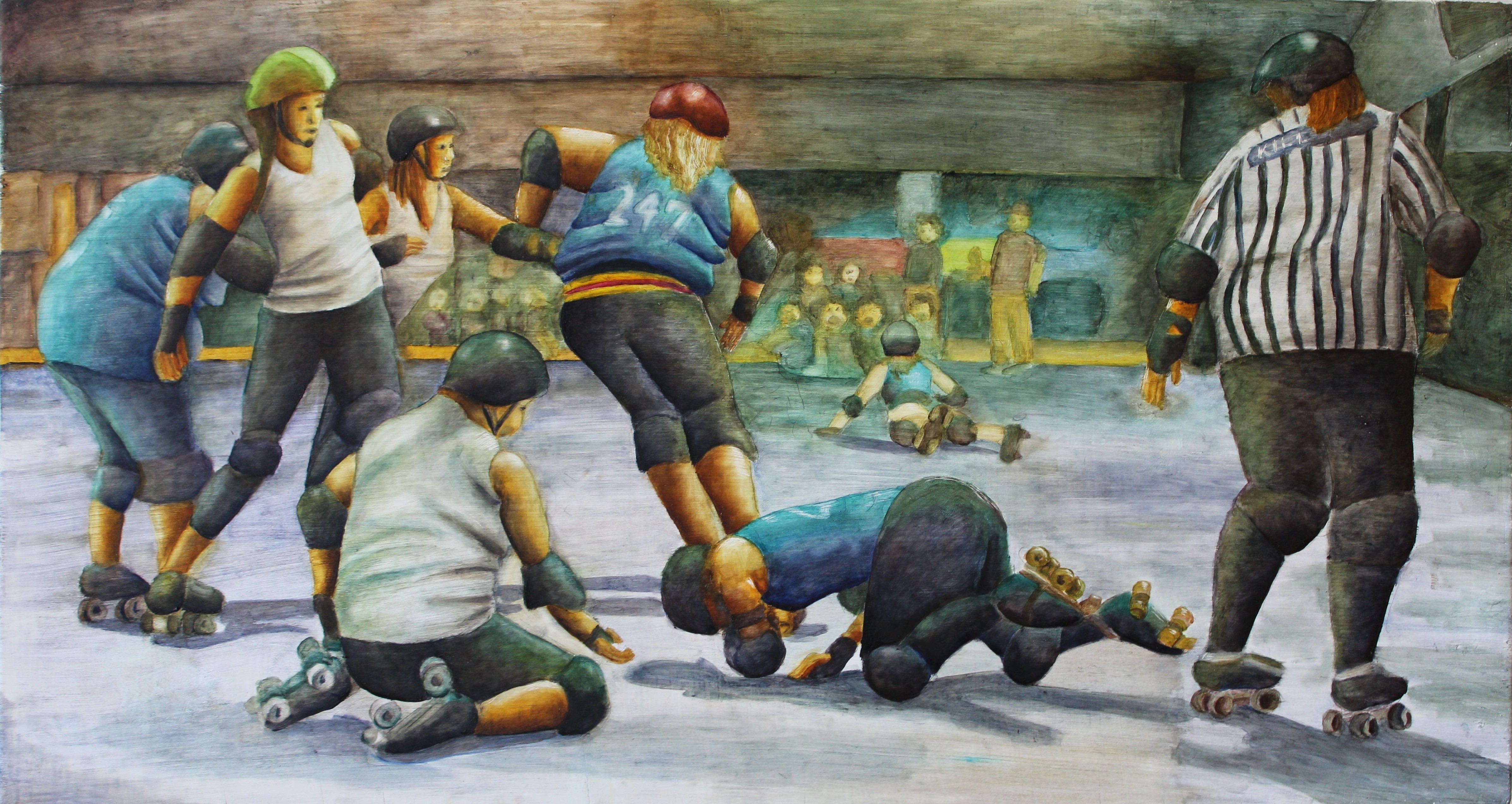
Sarah Burger
Break the Pack
oil on panel
20" x 16"
2019
Break the Pack represents my exploration of a multi-light source environment. It also represents my exploration of classical composition in a modern and mundane subject-matter.
Jordan Chase
Night Fall
After Effects, Premiere and Clip Studio Paint
00:01:28
2019
This piece incorporates old radio dramas with original audio, crafting a brooding dreamscape with a sense of building tension as the viewer sinks into the space.

Ningjing Chen
Zero Gravity
3D modeling in Blender
1920 x 1800
2020
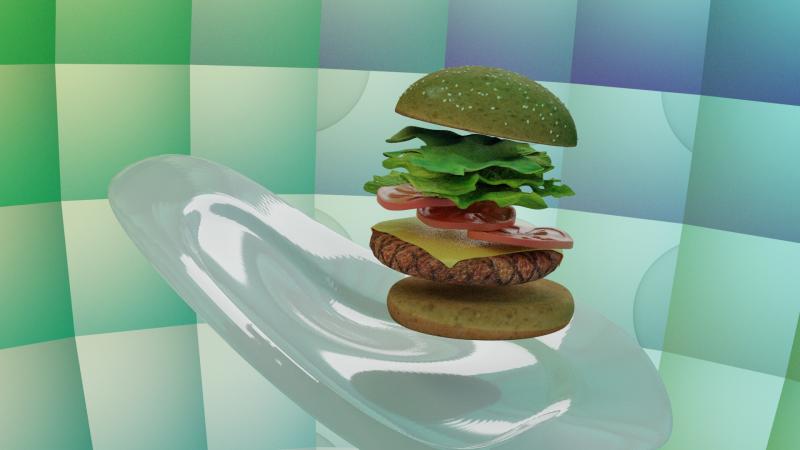
Ningjing Chen
Zero Gravity
3D modeling in Blender
1920 x 1800
2020
This artwork's central concept is to show how an everyday object can challenge physical rules in the virtual world. So, in modeling software Blender, I made this floating burger. The Plate under the burger is reshaped in Dali's style, which adds surrealism to my work.
Kayla Gifford
Is There Nowhere Else Where We Can Meet?
digital video
00:12:04
2020
This performative drawing project shares it’s title with a short story written by Nadine Gordimer from her book The Soft Voice of The Serpent and is informed by an ongoing body of work examining the history of relations between the U.S. and Iraq.
Gordimer’s story presents a reversal of roles in which the author self critically presents self as other, female as aggressor, and elite as alien. Described in shades of gray, Gordimer illustrates a moment of blending binaries and post-colonial reckoning where black meets white, oppressor meets oppressed, privilege meets need, fear meets intimacy, empathy meets repulsion, and female meets male. Gordimer erases all communication between characters, and readers are left to experience an interaction that escalates towards violence and left to interpret the intent and feelings of each character.
Reflecting on Gordimer’s writing and her presentation of self as the source of both the problem and the solution in navigating post-colonial racial tension, this project developed out of a similar place of internal wrestling. Recognizing that erasure can be a precedent for violence and the cause of its escalation, this project is an effort to explore how this narrative manifests in the personal and political history between myself and my partner and our countries of origin, the U.S. and Iraq. Our collaborative performance examines the breakdown of personal, social, and political relationships that leads to conflict. The word أشعر “Ashaar” is the Arabic translation for “I feel”. Repeated attempts to be seen and known are interpreted as a threat to self and the violence becomes an act of self-preservation as much as an act of destruction. The violence enacted is the result of fear and unknowing in both this drawing project and in the narrative of Gordimer’s writing.
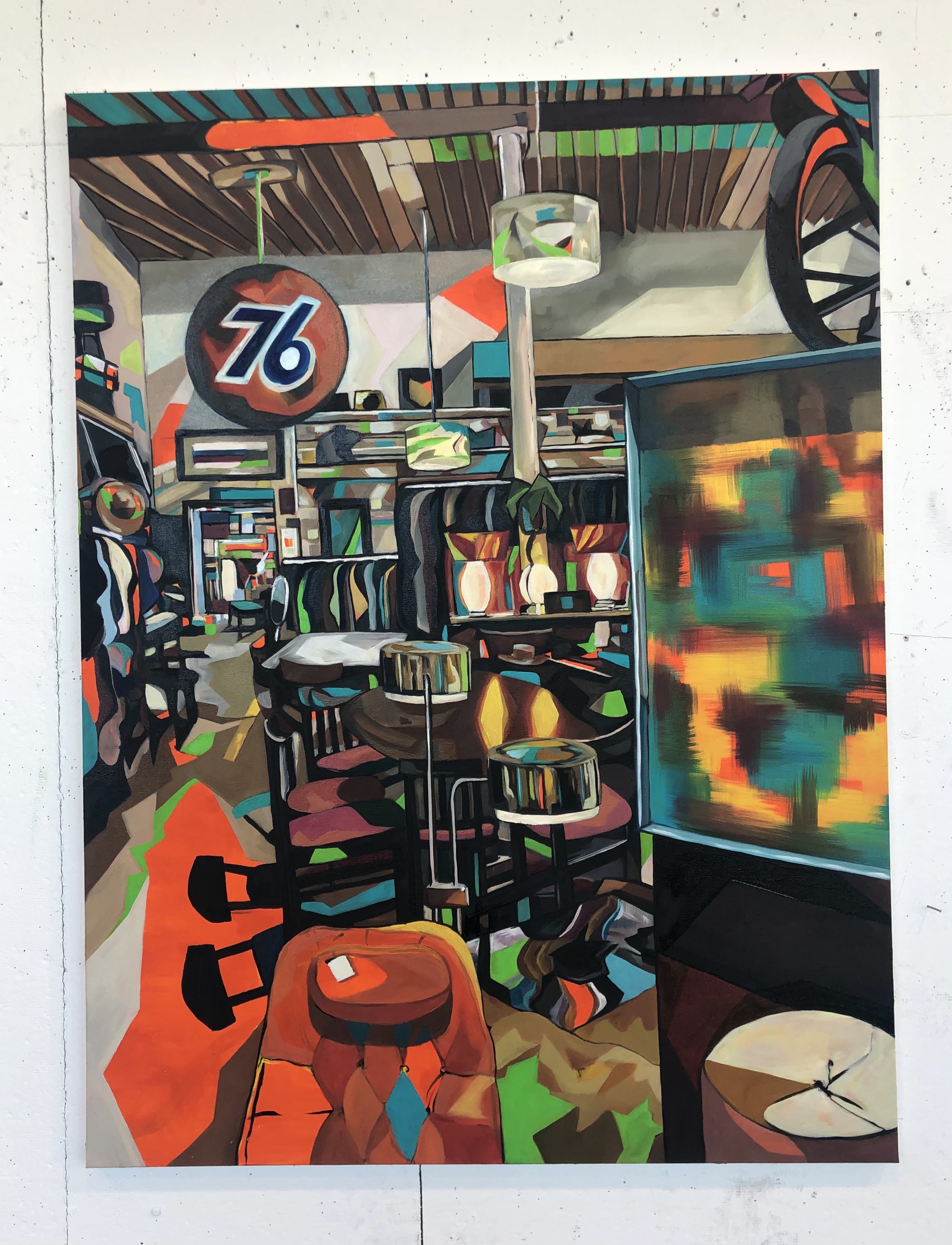
Jenna Josell
Portal
acrylic paint, modeling paste and graphite powder on a wooden door
28" x 80"
2020
I am an artist with a focus in painting and printmaking as my mediums of choice. I work with acrylic and oil paints, pushing the boundaries of each material through layering, scraping, heaping, removing and manipulation. My practice is led by questions of how our society relates and interacts with the architecture surrounding us. How do we feel when we are facing a large-scale building? I feel small and insignificant, and often overwhelmed yet in awe. I want to play off of this feeling and capture it in my work for the viewer to then feel. I often invert and collage architectural tropes together in an effort to confuse and intrigue the viewer. I also use mixed media as a tool to further push the confusion I want to achieve, using print techniques such as relief and intaglio.
My work is inspired by my trips to countries across the world, and more specifically my time and connection to Israel; images of the holy cities of Israel are prominent in my subject matter. My color stories come directly from the colors I observed in these cities, often employing neutral tones such as gold, beige, brown and grey, as well as brighter colors exclusively on the warm spectrum. While most of my work focuses on architectural motifs and the feeling gained from interacting with them, my interest mainly lies in the manipulation of space and creating depth using blocks of carefully chosen colors.
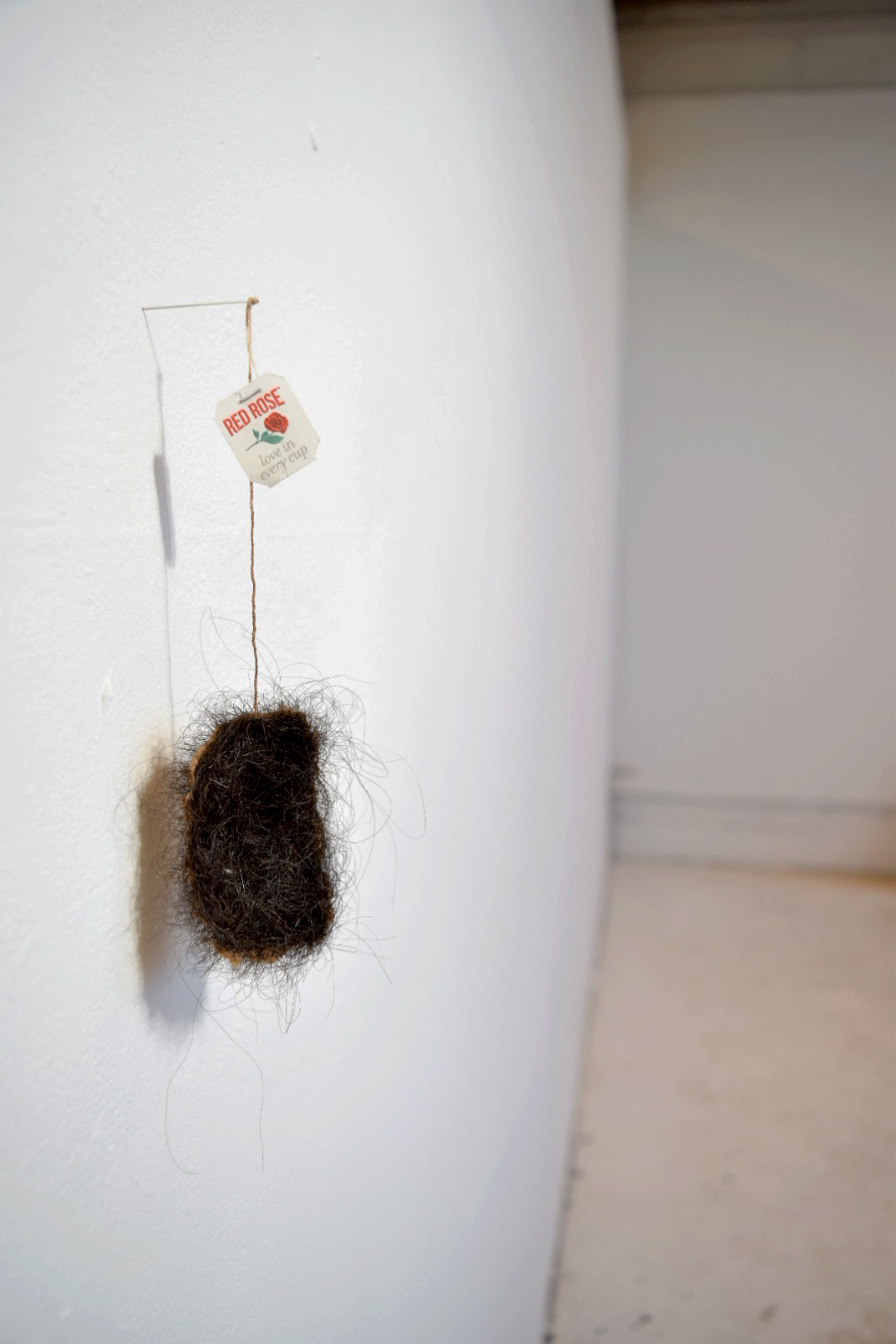
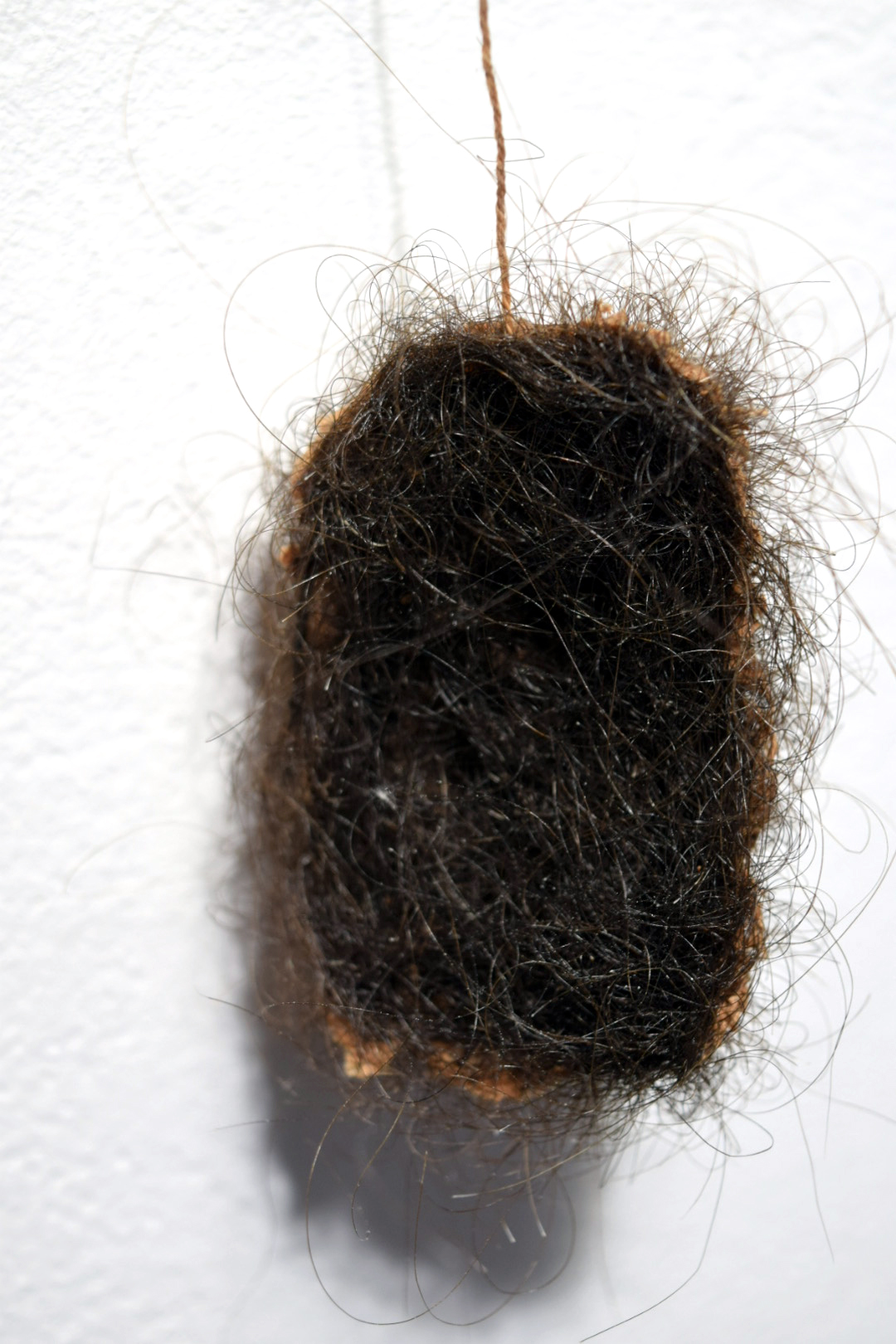
Erin Kearney
Is this what tending is made of?
shared red rose tea bag and my mother’s hair
10" x 2" x 3"
2020
I think about the interior moments of the home. The dustless countertop, the freshly pressed linens, the vacuum lines in the carpet. The moments that are perfectly curated for company, and the pushed-out breath that only comes after they exit. The deflating of lungs behind closed doors.
I think about the space inside those moments of pause. The parts of the home that lack veneer and expose the innards of the everyday.
When I was young, I had hair that reached past my two top ribs. I was old enough to know that wavy wet strands would resemble a rat’s nest if left untouched. I did it anyway.
My mother sat me at the foot of her bed. Draping snarls engulfed the snagged-up comforter. She dug the teeth of the needled rabbit comb into the heart of each hair cluster and pulled hard. She hooked her nails in and did the same.
With each pull I felt less. Every follicle was numb.
I could no longer distinguish fingers from teeth.
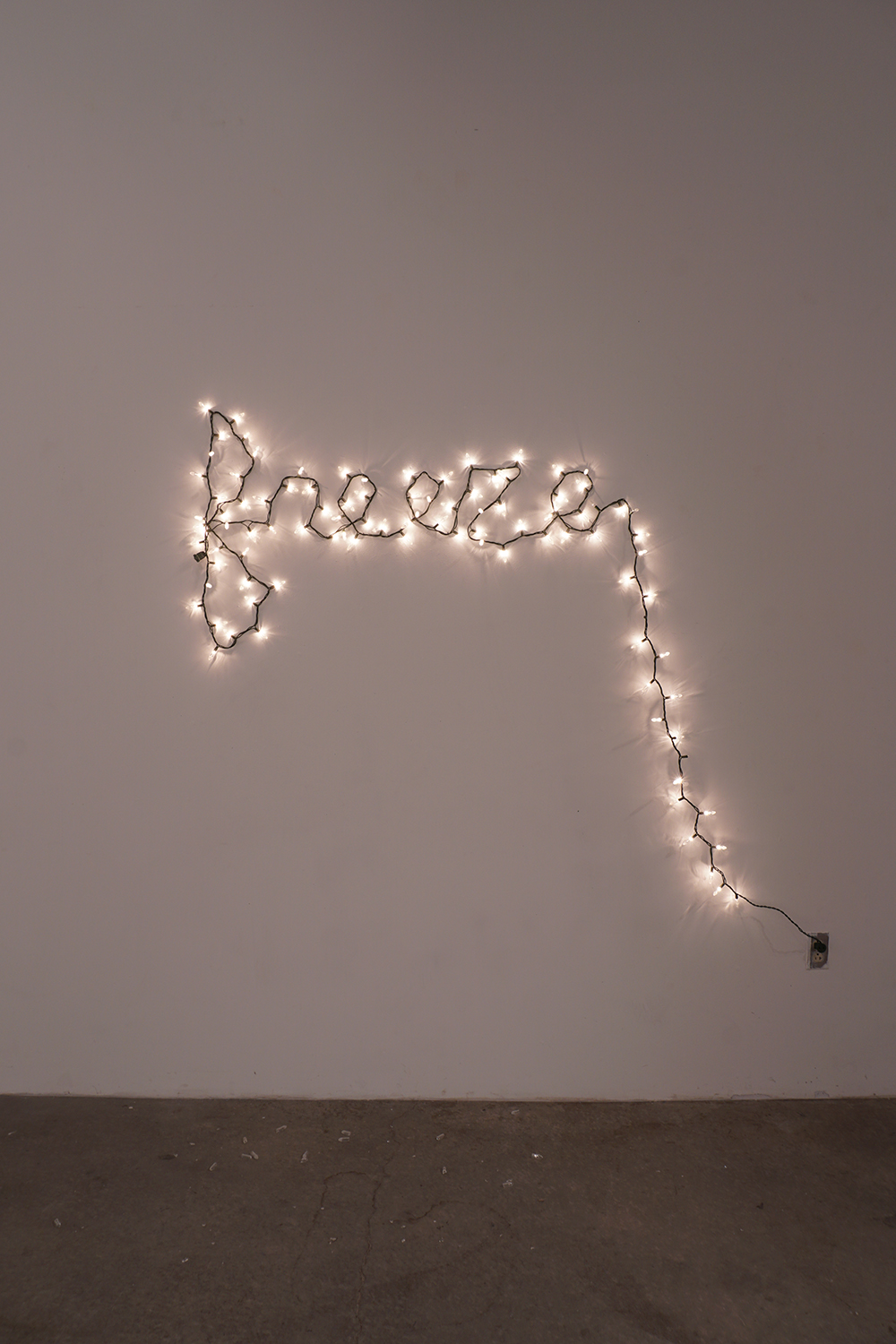
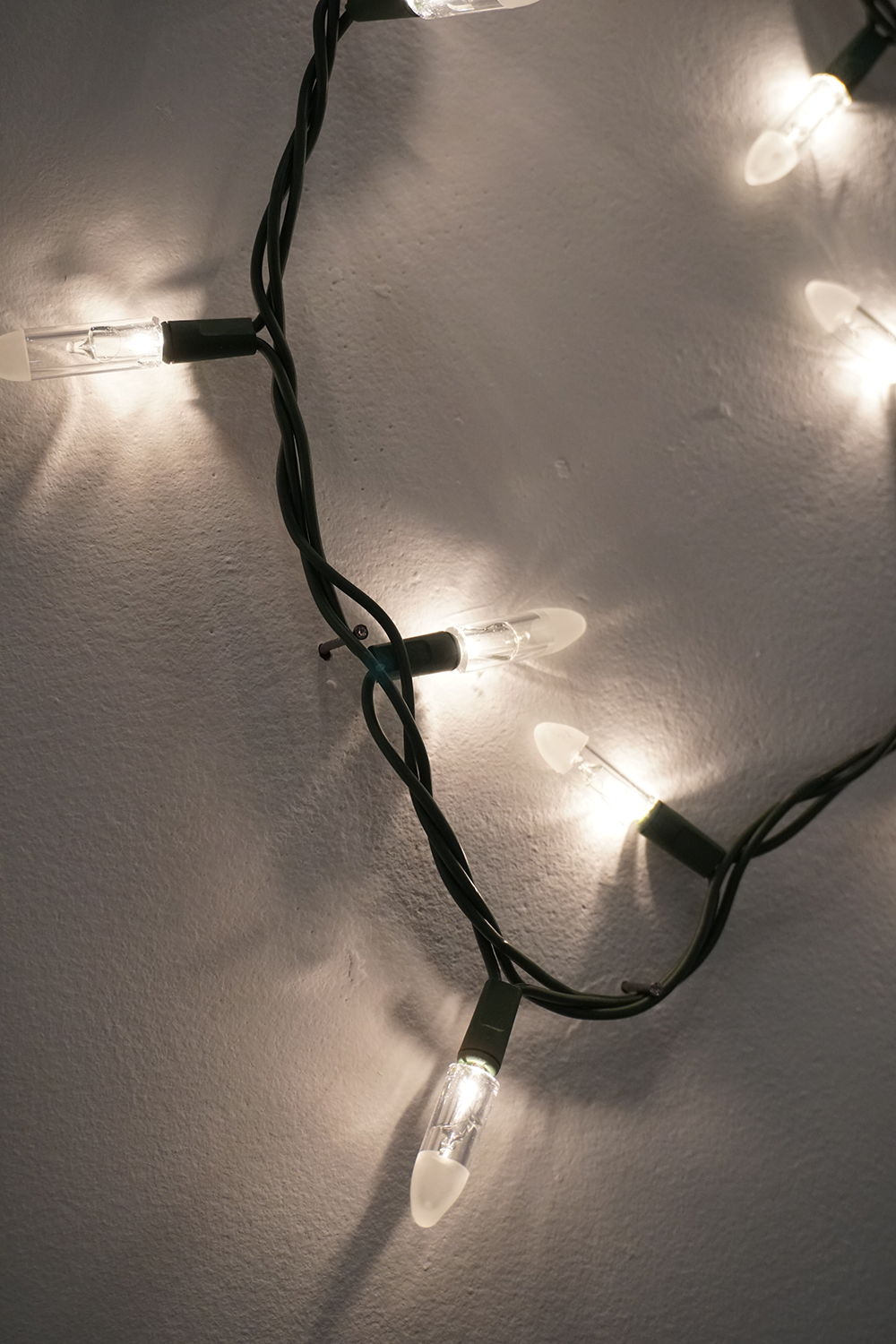
Anna Kovach
Don’t Shoot
flameworked glass and string lights
48" x 20"
2019
Examining the relationship between objects and identity is central to my work. What can quotidian objects offer us when examining self-conception? Whether it be string lights, lingerie, or loyalty cards, I believe they offer a vocabulary for ideas that are not concrete as well as an entry point for the viewer through familiarity. For me, the familiar serve as a springboard for synthesizing questions and responses about the individual and the structure in which she exists. Recently, this has directed me toward the themes of mental and behavioral health interventions and racial justice initiatives.
I believe it is critical that I use my position as an artist to challenge the society in which bodies are policed. Through language, these works, which are fabricated yet model found objects, control the narrative around which speculative realities are built. This exploration of language reflects the ways in which institutions emanate messages that benefit their own missions yet rejects their position within a colonialist, capital driven culture. In doing so, I affirm my own autonomy from oppressive bodies as well as affirm others.
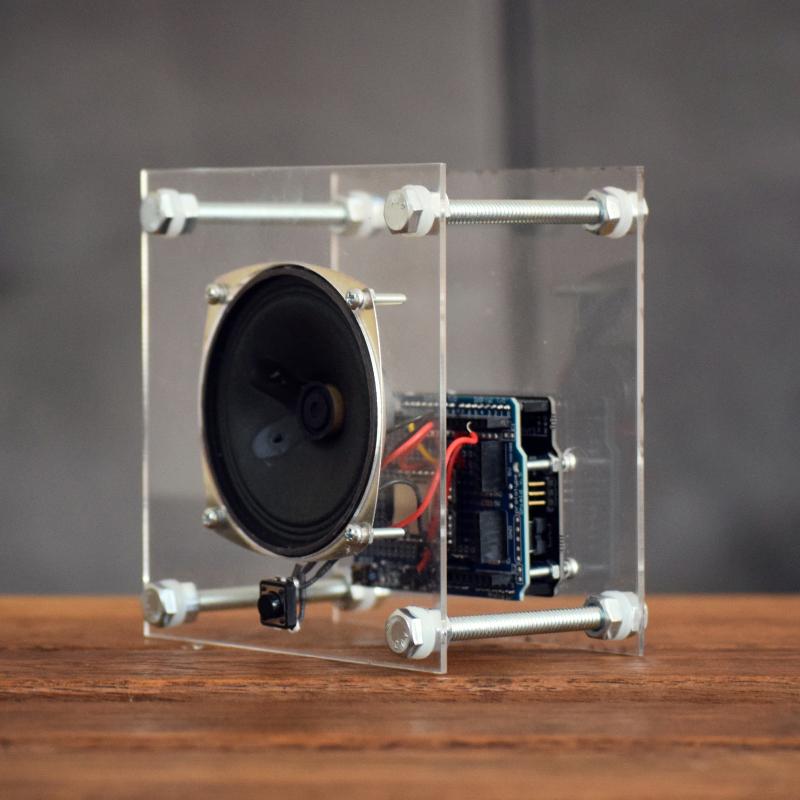
Angel Lam
Four-Year Capsule
Arduino UNO, acrylic and steel
5" x 5" x 5"
2020
Four-Year Capsule is an interactive sculpture that plays a mixture of English and Cantonese voicemails I’ve received from my family these past few years while I’ve been living away from home. When the button is pressed by the viewer, it triggers the Arduino to play the next voicemail through the speaker. In essence, this sculpture encapsulates these small moments of the past and crystalizes them in the present. As much as it is a conscious preservation of my history and family, it also presents a mode of release. Similar to the event of a random viewer who presses the button to hear a voicemail from the sculpture, these moments in time involuntarily ebb and flow from my memory. Physically, the compact size and transparency of the sculpture mirror the level of intimacy of the content being played. It begs the questions of what is private and what is public, and which parts of myself are retained or shared. Ultimately, Four-Year Capsule is an exploration of identity and vulnerability through the concept of family in relation to memory and the inevitable passage of time.
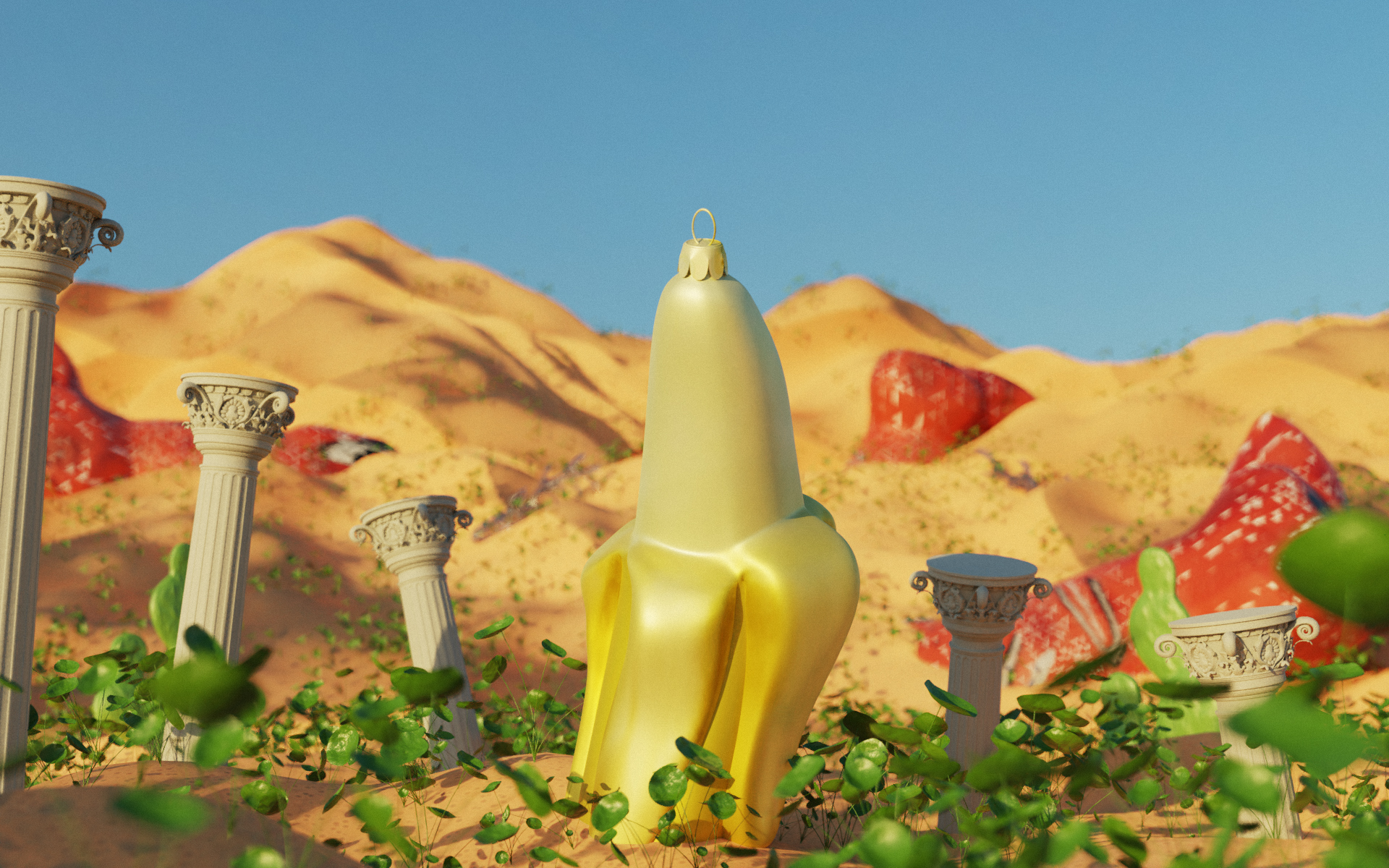

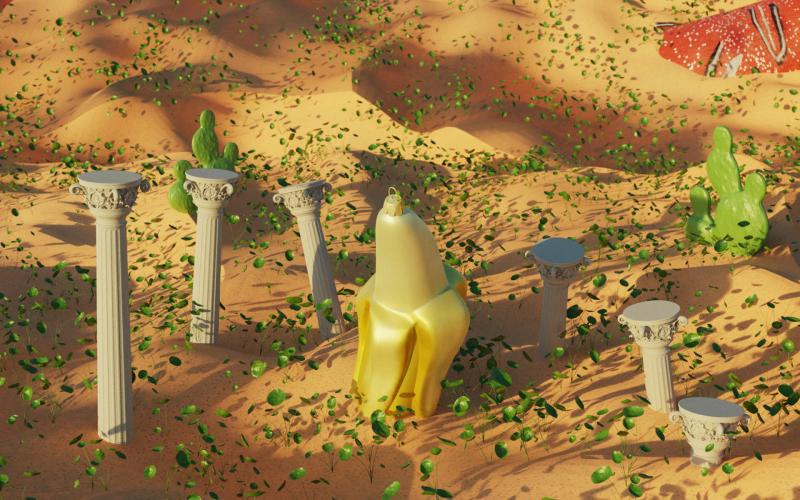
Jet Ni
Untitled
digital prints from 3D render
16" x 20"
2020
Untitled are renders from a digital three-dimensional space, exploring the ideas associated with a banana and juxtaposed within the setting of an ancient site. This series is also an exploration of how these digital three-dimensional spaces become compressed into the two-dimensional plane once an image is rendered out.
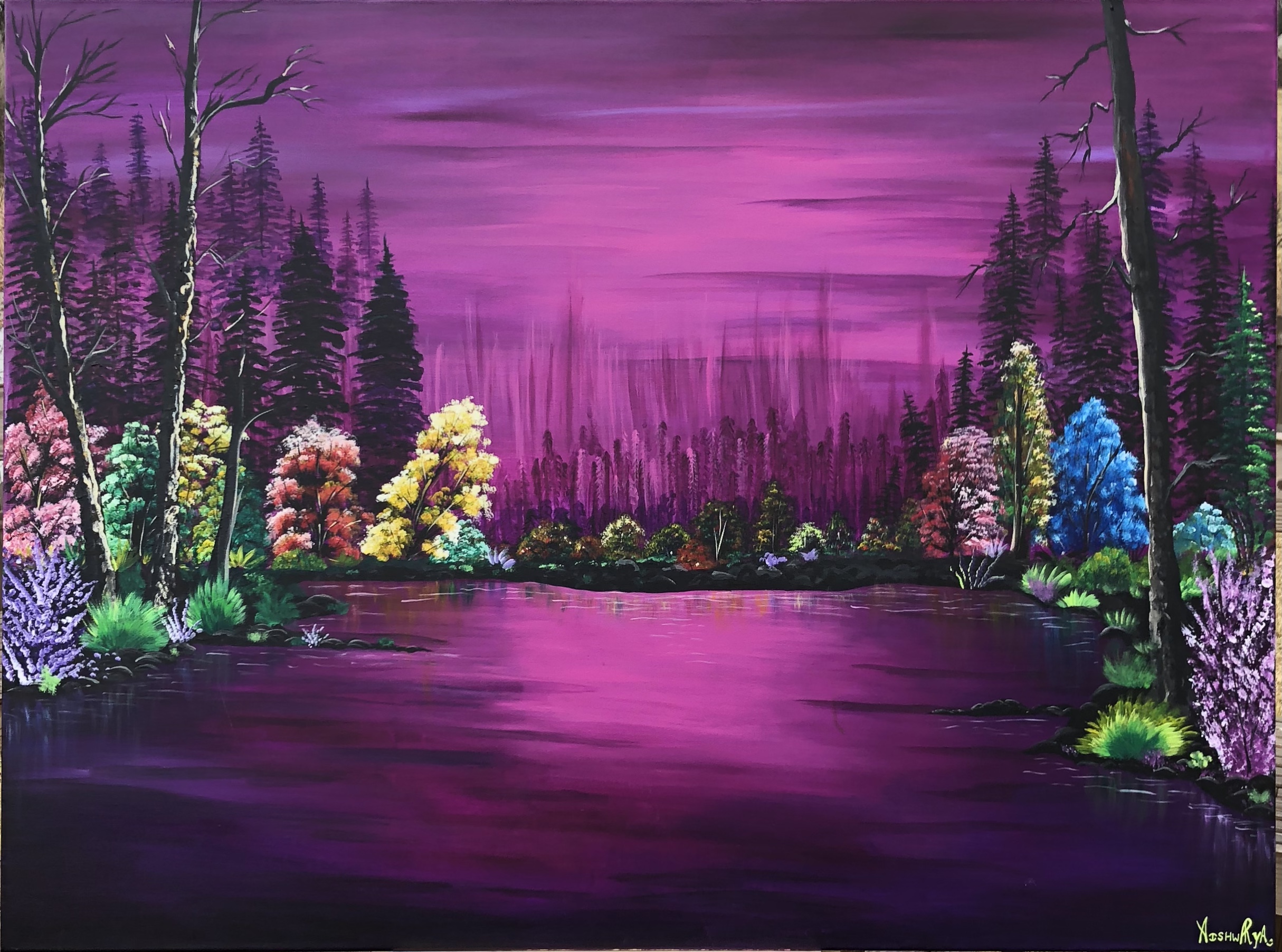
Aishwarya Patel
Purply Purple
acrylic on stretched canvas
36" x 48"
2019
I am a student at Ohio State University. I started sketching when I was a small child, and as I grew, I found myself becoming more creative and really started to learn more about sketching and painting. With this newfound talent and education, my family and friends started appreciating my work which encouraged me to keep painting and creating.
My art provides an escape from the daily stressors and allows a wave of positivity and peace to wash over those who view it. It gives the viewer, energy to keep them physically strong and happy with their ups and downs. The whimsical nature scenes include bright shades of color with every section of the piece incorporating different unique details for the eye to see. My overall mission is to convey the message that Mother Nature connects to all humanity and guides us to pursue our greater missions in life. My signature in the last of the painting represents the importance of smiling even in the hardest of times and even despite our own shortcomings, it’s valuable to make others smile.
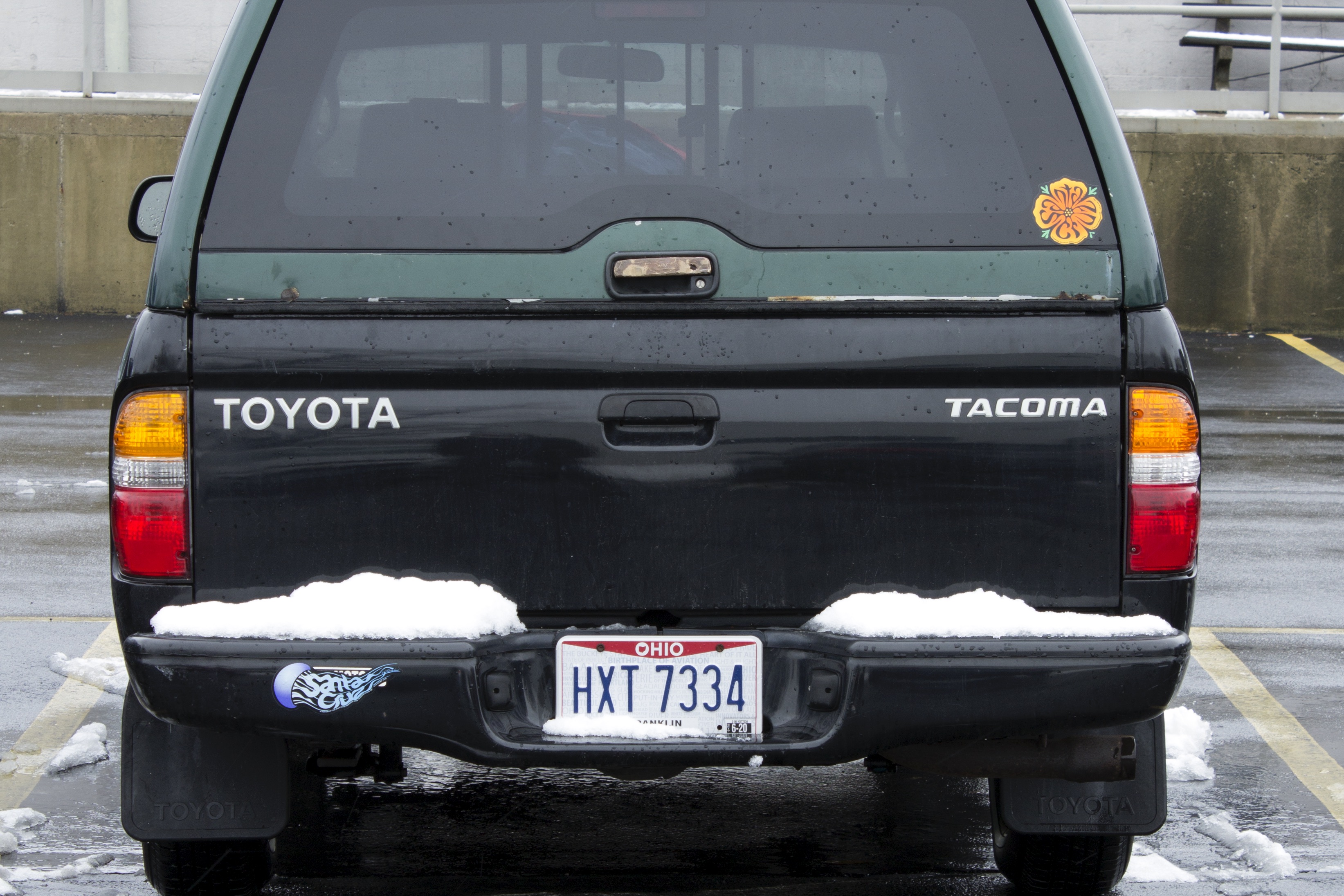
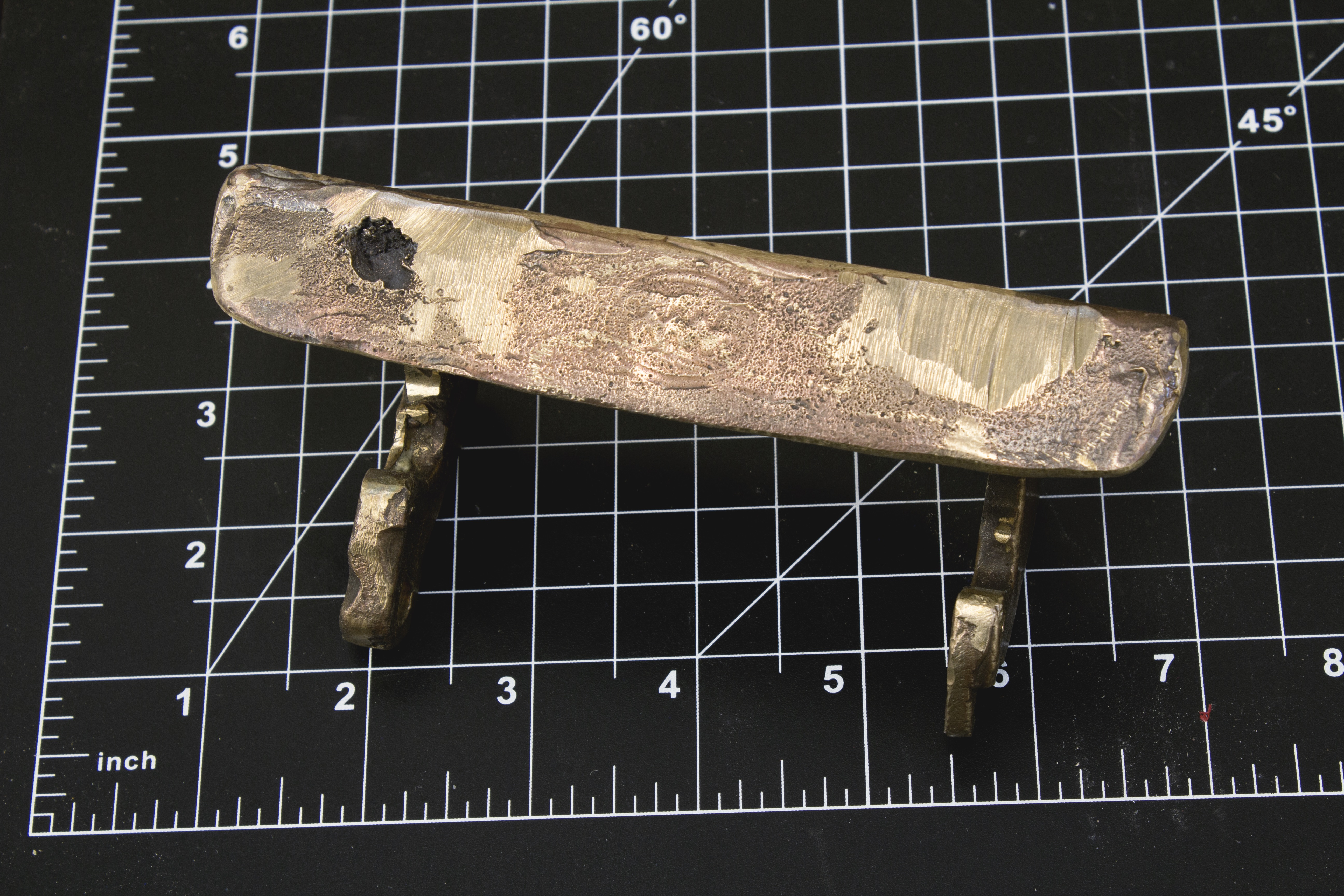
Aaron Peters
Bronze Monument in Columbus OH, USA
bronze
6" x 3" x 3"
2020
It’s frustrating when something that you live with and use daily becomes broken. The extent to which we depend on our environment and systems to work is revealed to us when a part of it is not functioning the way it should. I’m interested in maintenance that may be overlooked or invisible to many. This invisible care is so important to our society and wellbeing. In art, there is a hierarchy of creating new things that we haven’t seen before. In the case of my pickup truck handle, bronze that is normally seen as a fine art material is used as a material for repair. The original object being replaced is transformed from plastic to metal, embracing the hierarchy and nostalgia for the pre-plastic era. Fixing what is broken is an ongoing practice that counteracts consumer culture by not buying something new. This bronze handle is a signifier for this practice of repair and what we may consider being monumental.
Julian Robbins
Memorandum
animation
00:03:49
2020
Memorandum is a piece of experimental video, blending 3D and 2D animation, exploring the evolving nature of memory, the reflective nature of art, and the healing from trauma.
When I was 9 years old, there was a mass shooting at my Church, the Tennessee Valley Unitarian Church. While I did not directly witness the event, the shared memory of pain greatly influenced how I grew up, and eventually, my art. In Memorandum I take the viewer through the confusion and heartbreak of such an event, into the misty world of reflection through art. Finally, through reconnection with love, a sense of hope and security is returned, as I take the viewer through a beautiful and brightly-lit scene.
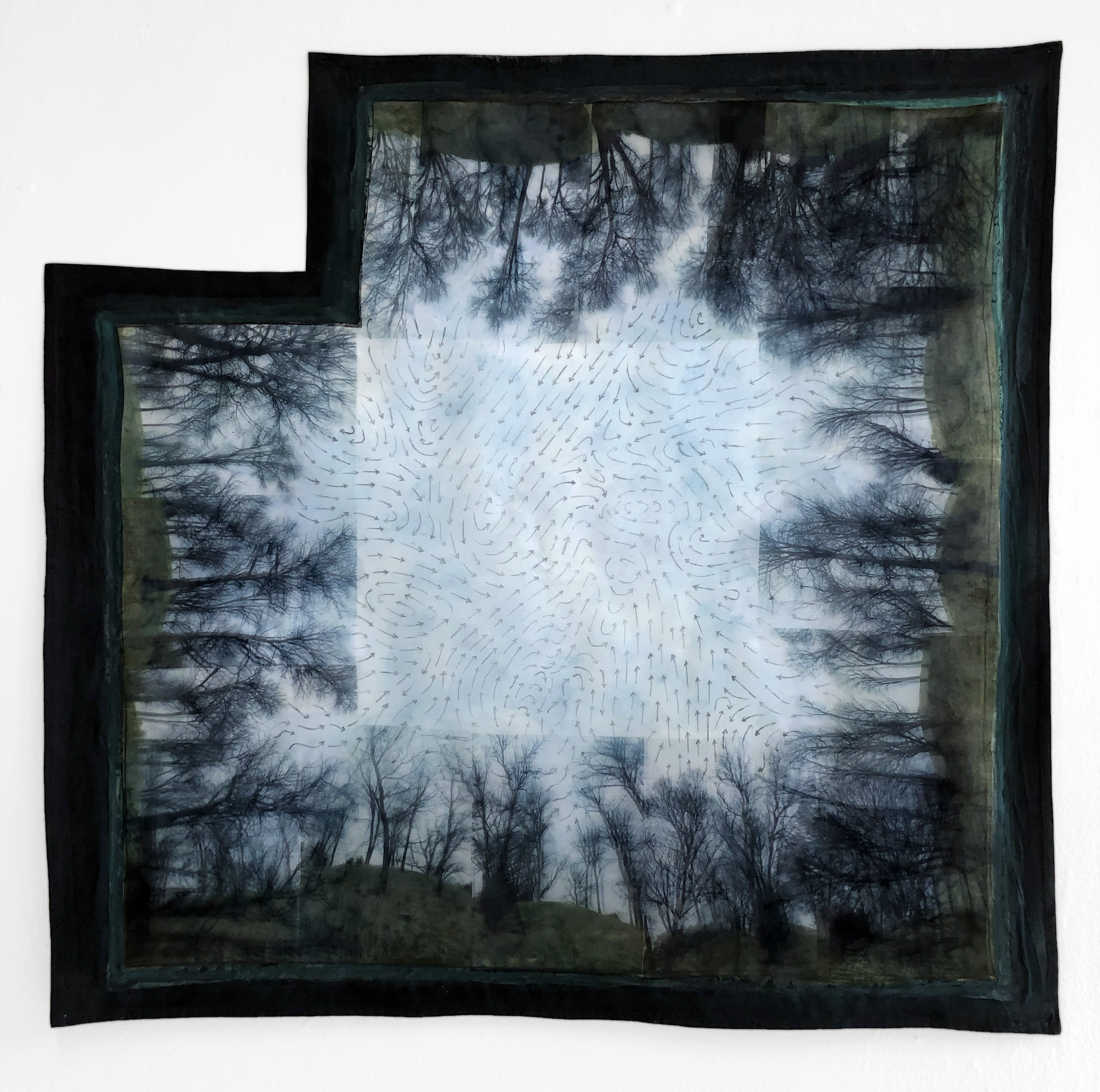
Lydia Smith
Sky Map (Jeffers Mound)
dye sublimation print on silk organza and broadcloth, and acrylic paint
36" x 34.5"
2020
My interdisciplinary art practice unpacks multi-layered understandings of place through site-specific responses, particularly in the context of cemeteries, burial grounds, and historical sites. I uncover history overlooked and challenge our collective understandings of the past, questioning the narrative of what is and what should be remembered. My practice is rooted in research processes that include sensorial ethnographic fieldwork methodologies borrowed from anthropology, sifting through or reassembling the archive, and mapping through walking. I ask us to persistently look closer into our environment and complicate our initial perceptions of landscape. Places remember things. I seek to learn their stories and translate them through the subjectivity of my hands.
This body of work is all related to ongoing research I have conducted about the earthworks in Ohio made by the Adena and Hopewell traditions, including Shrum Mound in Columbus and the Newark Earthworks. The majority of these sites were destroyed with the advent of settler colonialism, which erased much of their history. These sites captured my attention due to both their political complexity and natural beauty as ancient landscapes. My work opens up questions about the mysterious nature of these sites and honors them through new representation and speculative fiction.
Nalani Stolz
Traces
2-channel video
00:35:57
2019
How does it feel to inhabit your body? To experience the processes of decay and disintegration as we move toward death? To feel the boundaries expand and contract? Through sculpture, performance, and installation I investigate these questions. Using rising dough to explore expansion and constriction, allowing cloth sculptures to leak and ooze, blowing air to slowly disperse the feathery insides of a comforter, using my hair to stitch my body to my mother’s. Through these material surrogates each work makes porous the boundaries of interior and exterior. Giving form to the ways our body takes in and expels matter; the feelings of expansion, heaviness and fullness and those of emptying out, of breaking down.
These bodily forms and processes draw on the often gendered experiences of menstruation, leaking, pregnancy and on. My material processes come out of the domestic skills learned in my childhood, and all the exhaustion and tenderness they invite. The installations, sculptures and performances are stripped down to minimal forms and gestures to create moments of quiet. Many of the works shifting over the course of an exhibition to convey these slow processes of change or disintegration.
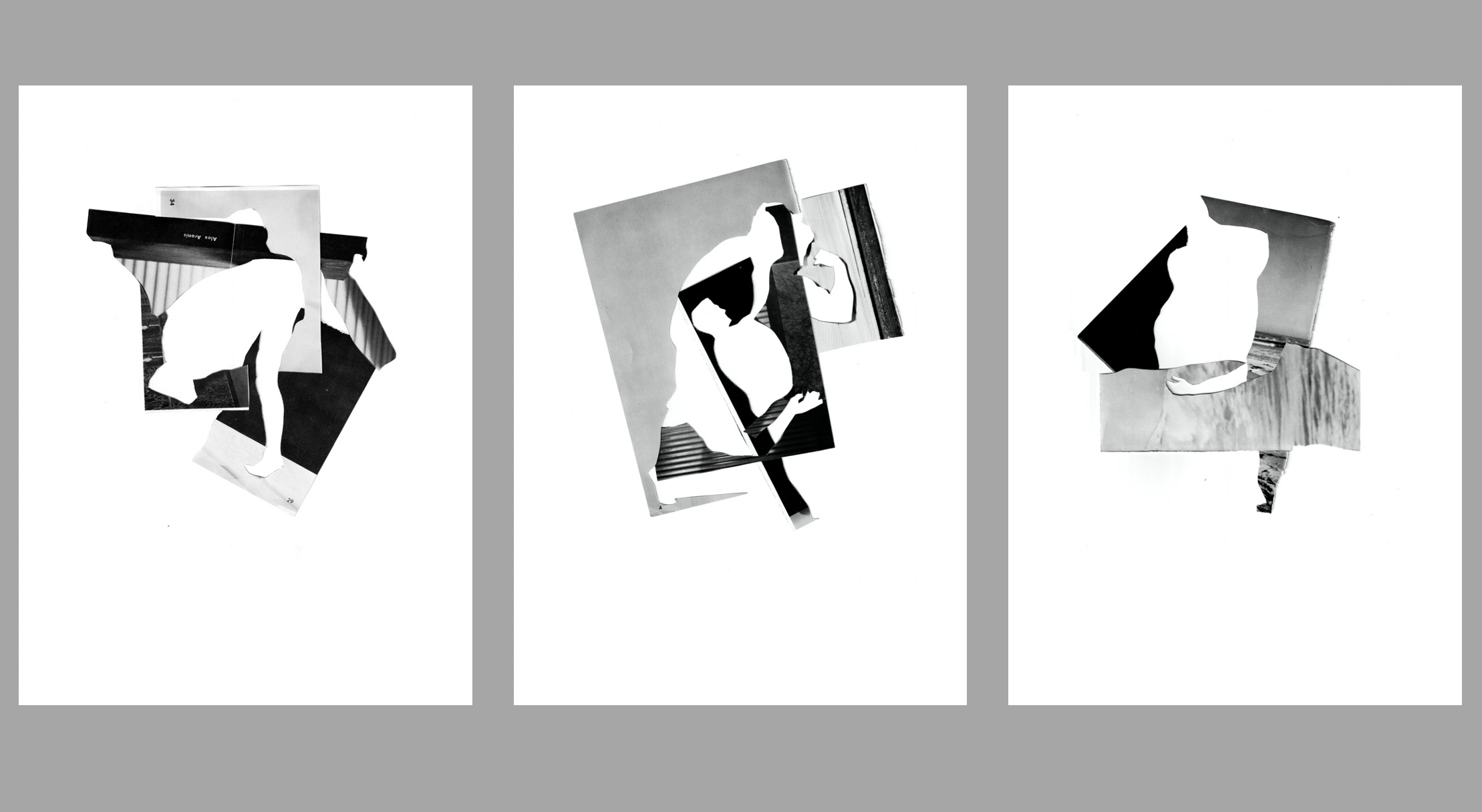
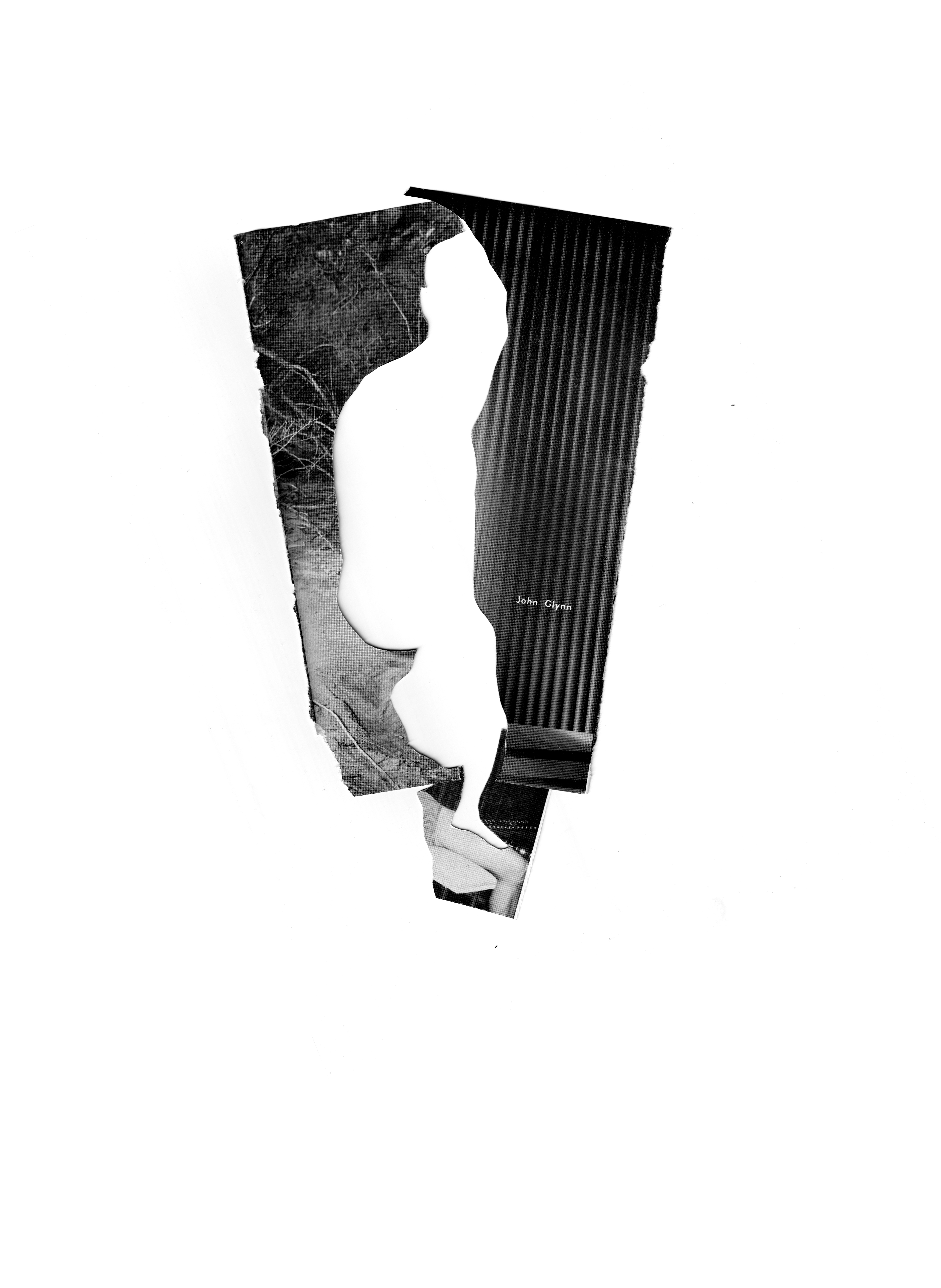
Brett Taylor
Untitled (Series)
archival inkjet prints
18" x 22"
2020
My work explores the relationship between queerness, masculinity, and physical ability through the queering and crippling of the male form. The body, as object, exists in a constant state of becoming. A process of uninterrupted bodybuilding by which a person orders and reorders the self, responding to resistance. Negotiations with the fluctuating spatial conditions, the body is forced to resist the environmental restrictions in an effort to grow beyond them. This stimulus for physical change is only obstructed by the will of the mind. The potential self is never realized exasperated by the failure to achieve maximum capacity. Beings strive to identify the physical boundaries that define them only to identify new ones that confine them. Growth centered around inadequacies seeks failure to strive for infinite improvement. The tension between the interior and exterior being leaves the body in a developmental state, never quite complete.
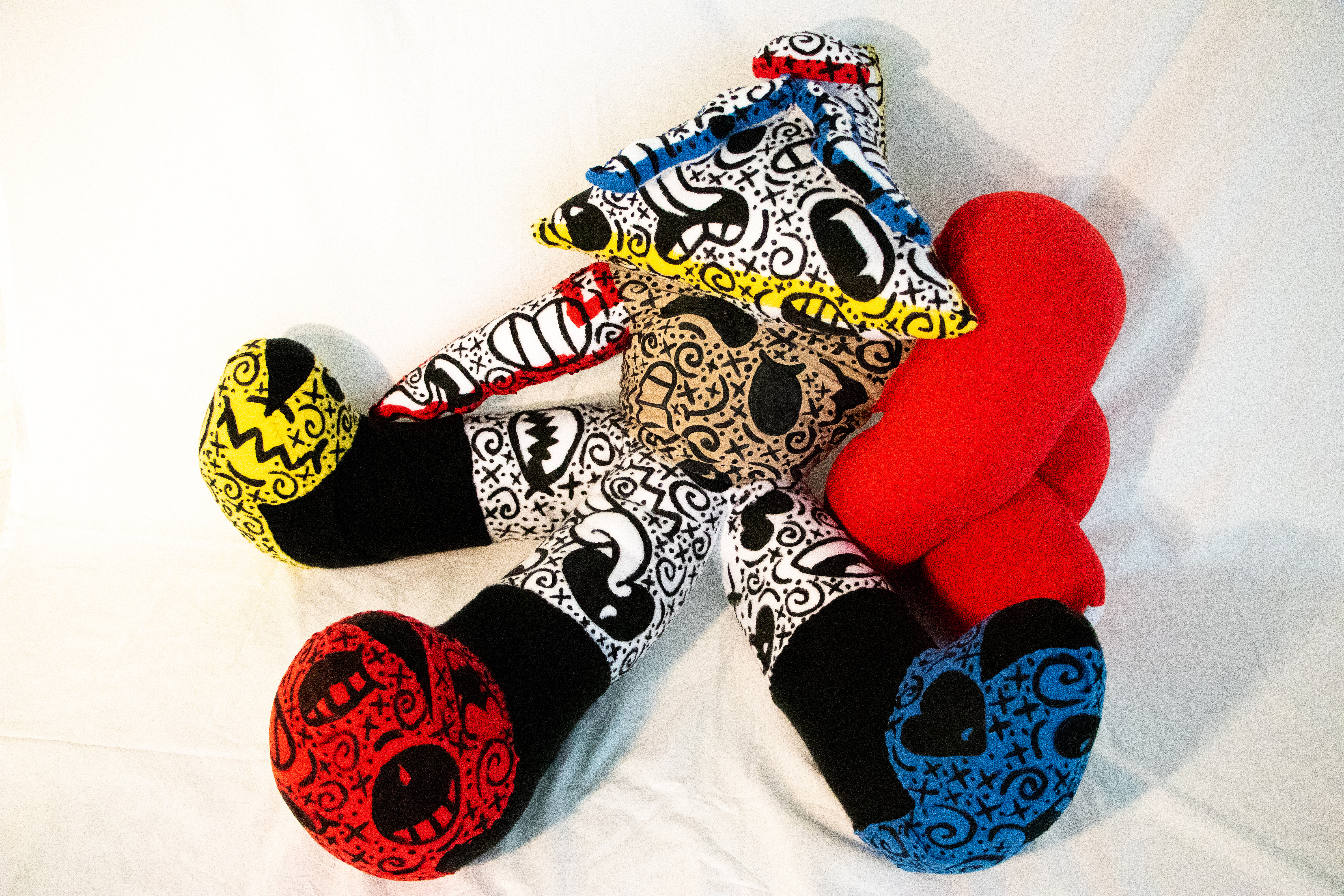
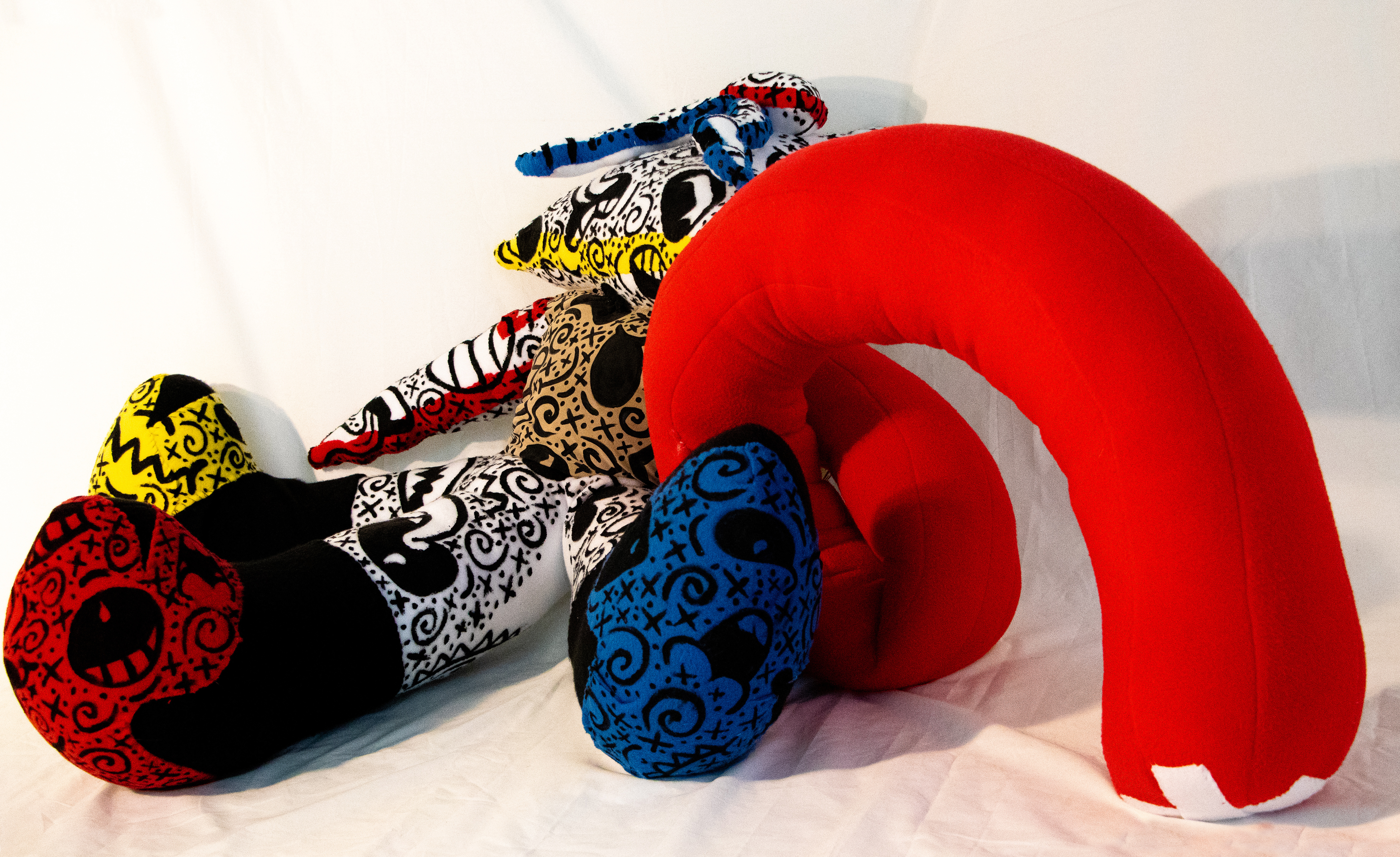
Mitch Vicieux
TRIAD/ENTANGLED LEAN
blizzard fleece, compression binder, embroidery thread, polyfil and acrylic paint
37" x 22" x 33"
2020
I was scrubbed and sanitized, prepared and drawn on, sliced and sutured. It’s a lifelong journey to sculpt yourself, through cuts and cardio and recombination. Through this pursuit, I wonder - who is allowed to transform? Why is my metamorphosis taboo when the results are so precious? These musings are ignited by the surgical presence of my transition, and boundaries faced along the way. Bringing form to transitional possibilities, my practice stitches comic arts and plush sculpture together, bearing a brood of limitless bodies.
Working to subvert misgivings around body modification, the plush monsters are ALIVE! I draw comics that become fabric patterns, sew monsters that flatten into inked characters; they live as a perpetual re-conglomerate. In the stitching of seams and injection of stuffing, these characters celebrate body modification as a political, visibly queer endeavor.
Recombinant sensibilities define my practice; ceaseless acts of mixing disparate worlds. Amalgamations are forced into our reality, crawling into space where bodies exist. I pluck materials and concepts from different categories, removing their original context to seam them together. This tactile practice requires cartoon whimsy alongside surgical precision, transitioning creatures through phases of sculptural and animated existence – feeling the cut and pulling the stitch.

